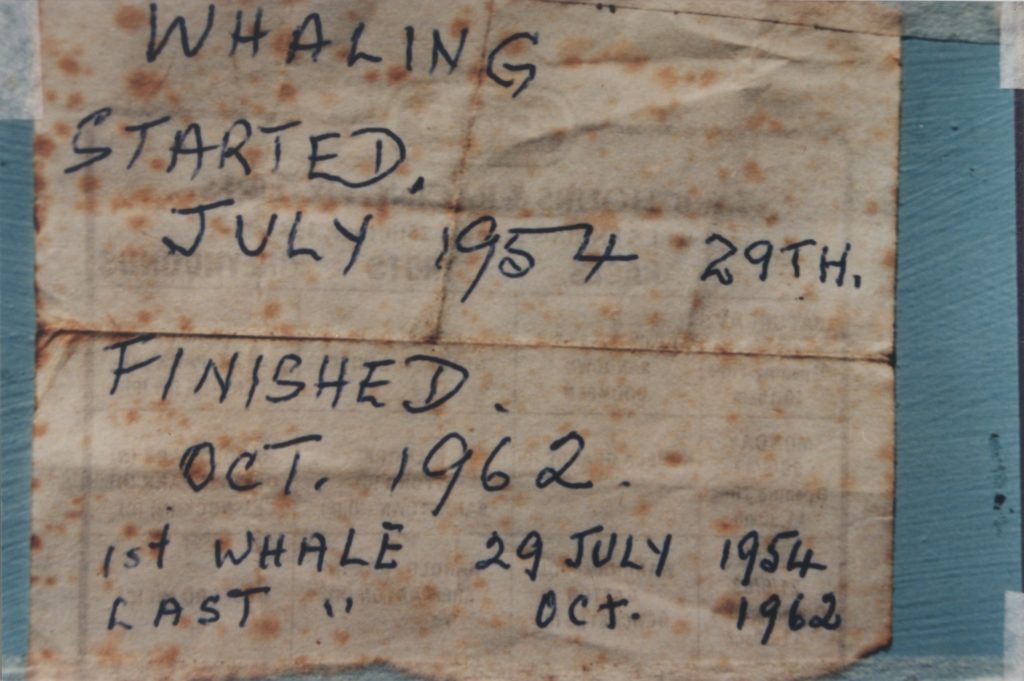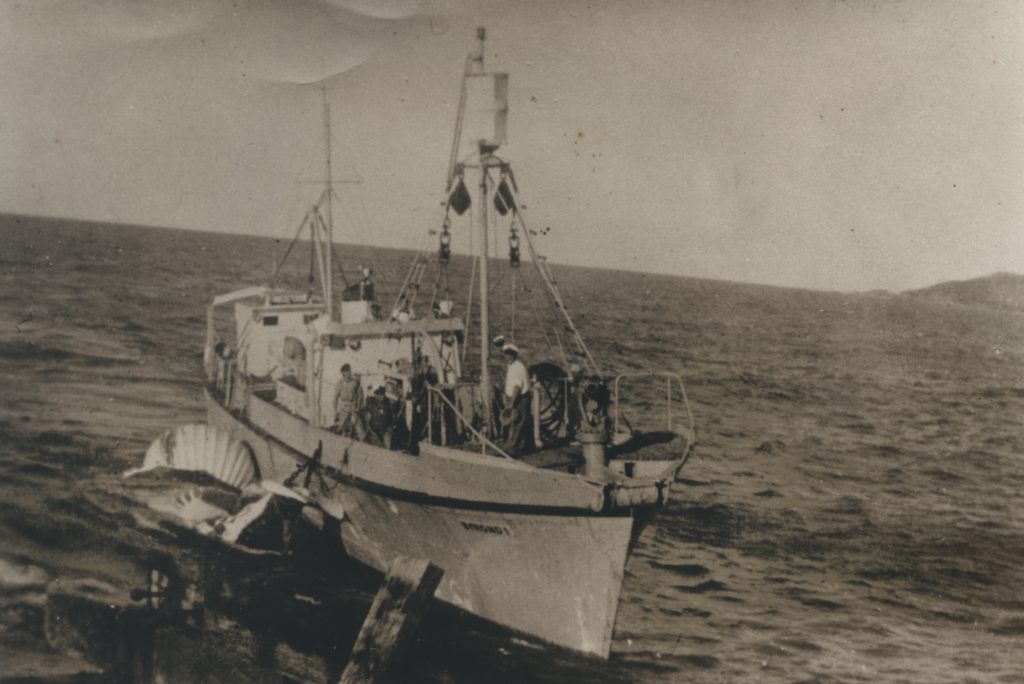Site 8: Whaling
PREV NEXT

Whaling commenced in Byron Bay in 1954. The Byron Whaling Company with an initial quota of 120 male humpback whales each year “took” its first whale on 29 July that year.
Whales migrating north during May-August from Antarctic feeding grounds to their Coral Sea birthing and mating areas were preferred as they had the largest reserves of blubber then. Whales were leaner on their return journey in September-November having not have eaten since leaving Antarctica. Taking females and calves was prohibited.
After harpooning and killing the whales the carcass was filled with air to stop it sinking and then towed back to the “new” jetty where it was hauled from the water, placed on a flat top rail wagon and carried to the processing factory.
Flensers removed the blubber, skin, and meat. The skin and blubber were boiled to separate the valuable oil (about 10 tonnes per whale) used to make margarine, explosives, cosmetics, lubricants and detergents. The meat was frozen and exported.

Byrond1 bringing a whale back to the jetty (Source RTRL)
After the oil was removed from the bones they and other solid waste were converted to dry “meal” for animal feed or fertiliser. Liquid waste was pumped to sea through a “blood pipe” – hence the many large sharks in the Bay.
Initially many large whales passed close to Cape Byron. On “good” days the whalers Byrond 1 and Byrond 2 would harvest three or four whales.

Flensers prepare a whale for processing (RTRL photo)
But as seasons passed they spent more days at sea, sailing further away from Cape Byron to locate their prey. The whales “harvested” became smaller and leaner each year. In 1962 only 107 whales were captured in 144 days of hunting yielding just 5.9 tonnes of oil each compared to 1959 when 150 whales captured in 56 days 9.7 tonnes of oil each. This was unsustainable economically and ecologically and the Byron Whaling Company ceased operations in October 1962 after harvesting 1124 whales.
In 1962 fewer than 5000 humpback whales remained in the southern oceans. In 1966 the whaling industry collapsed. The humpback population is still recovering with 35,000 expected to pass Cape Byron on their annual migrations.

Whales (Source Craig Parry)